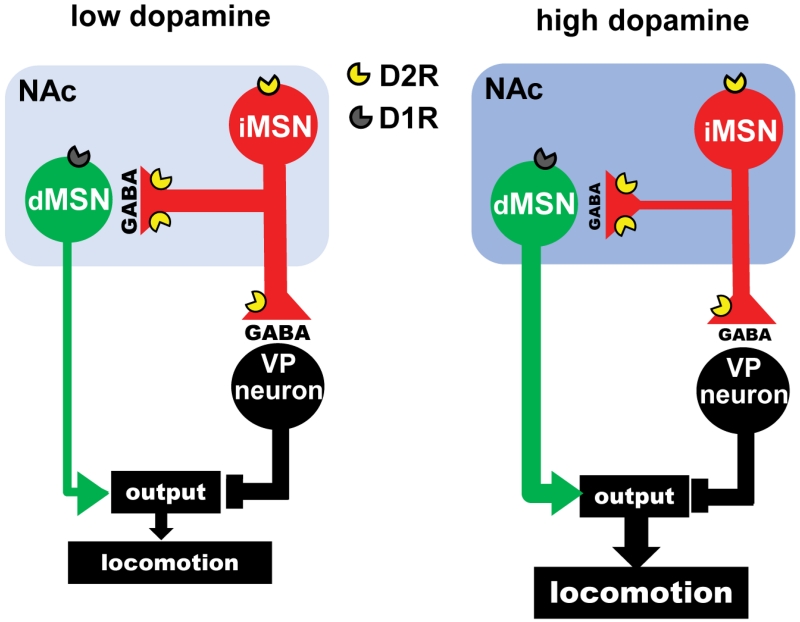Figure 8.
Model: Lateral inhibition can control the firing of dMSNs. Dopamine D2Rs in iMSNs suppress the lateral inhibition to gate basal ganglia output and locomotion. Left, Under conditions of low DA levels in the NAc (light blue), a strong GABAergic collateral transmission from indirect-pathway MSNs (iMSNs) restrains the excitability of direct-pathway MSNs (dMSNs) and reduces locomotion. Right, When DA levels are high (dark blue), such as when cocaine is present, activation of D2Rs localized in iMSNs suppresses GABA release from iMSNs to disinhibit dMSNs. DA/cocaine facilitates direct pathway output via two independent mechanisms: 1) indirectly, via D2Rs in iMSNs that caused disinhibition, and 2) directly, via activation of D1Rs in dMSNs.

